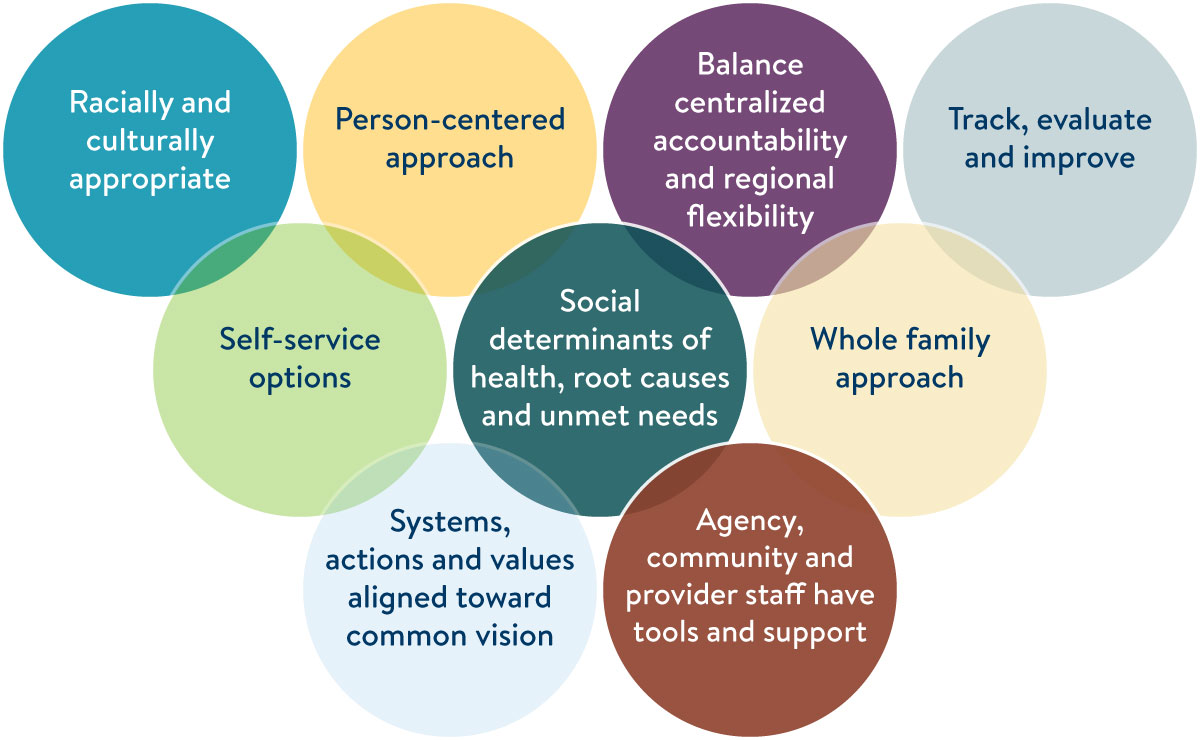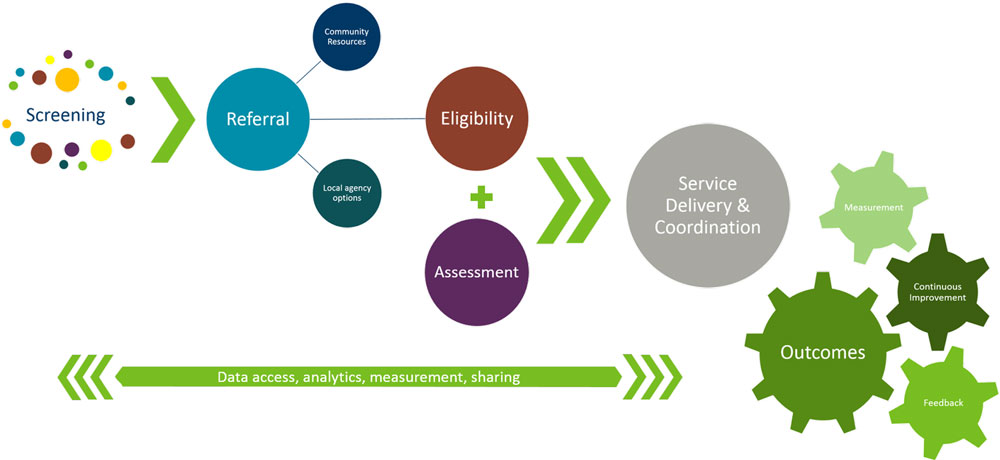An integrated services model: the basics
 In the past, we sometimes viewed technology as the thing we needed to fix to make our programs simpler and to make service delivery better. But we have come to understand that meaningful change is only possible if we also work to build better business processes and support a culture that makes ongoing improvements, working with people and communities directly on changes they care about, that are rooted in equity.
In the past, we sometimes viewed technology as the thing we needed to fix to make our programs simpler and to make service delivery better. But we have come to understand that meaningful change is only possible if we also work to build better business processes and support a culture that makes ongoing improvements, working with people and communities directly on changes they care about, that are rooted in equity.
Developing a new model
We relied on relationships
The Minnesota Department of Human Services (DHS) partnered with the Minnesota Association of County Social Service Administrators (MACSSA) and White Earth Tribal Nation to set a shared vision for integrated services delivery in Minnesota. The result is a guiding model for integrated services that aims to change the way people experience the human services system. The project team contacted programs throughout the country to learn best practices, reviewed feedback from individuals around the state about their service experiences, researched reports, visited county and tribal nation offices, and received technical assistance from the American Public Human Services Association. The model was adopted in 2018, and we are now moving forward to bring the model to life and significantly change the way we deliver services.
Goals
The goal of the integrated services model is to provide all Minnesotans with access to a simpler human services system. To do that, we need:
- Comprehensive human services that meet individual, family and cultural needs
- The power for people to determine their needs, choose services and set up personal goals
- Information access controlled by people and those working with them at all points
- Quality customer service throughout the person’s experience
Guiding Principles
To meet these goals, our model relies on a number of guiding values:

- Racially and culturally appropriate efforts support an equitable human services delivery system.
- The human services framework is person-centered.
- There is a balance between centralized accountability and regional flexibility.
- Data analytics are embedded across the model to measure effectiveness and provide information for continuous service quality improvement.
- People can interact with human services either through self-service or with staff.
- Social determinants of health help identify root causes and track progress for individuals, families and communities.
- A multigenerational approach to providing human services takes into account the needs of the whole family, rather than one individual.
- Systems, actions and values are aligned toward a common vision in partnership across the state.
- State, county, tribal nation, community and provider staff have the tools and support they need to best serve individuals and families.
The service delivery flow
The model provides a framework that can be applied across most scenarios in human services. The framework makes it easier to see that across programs and services, how we serve people can be broken down into standard parts that people should be able to rely on. These parts work together in a flow. The model demonstrates this flow of how an individual or family might move through the system: through an initial screening that helps identify unmet social needs, exploring their relevant options and receiving referrals, narrowing to their best options and then providing more information to figure out their program eligibility, completing any necessary assessments to get a more detailed understanding of needs, and then ultimately reaching the point of service coordination.
Data access, analytics, measurement and sharing are critical across the full model, and also contribute to the ability to measure outcomes on the individual/family, community, or system level.
The business model is broad and flexible enough that to fit the breadth of DHS programs and services. We know that it’s not realistic for people to always have this linear of an experience. But, having this basic flow identified will let us break down service access and delivery and look at what the goal of each part is, and how we can meet the goals and serve people best within each part, offering new, simpler options that meet them where they are.

For more detailed information about the Integrated Services Business Model, download the Guide.
Implementation
The model was completed and adopted in early 2018. Since then, we have put strategic plans in place, and have begun identifying specific projects and initiatives that will move us all toward integrated services delivery and bring together communities and partners in design. These first, foundational initiatives are underway, and will start us on the path to the large-scale, long-term changes we envision. We’re approaching the way forward with a focus on human-centered design, which at its heart means finding solutions by talking directly with people and partners to design a way forward together, trying things, adjusting, and then trying again. We’re also researching other states’ efforts, federal guidelines, statutory requirements, and best practices, and using state demographics and data, and applying analysis to ensure we embed equity throughout. We are focused on simplifying programs and requirements, and are doing analysis of statutes that may need to change.

